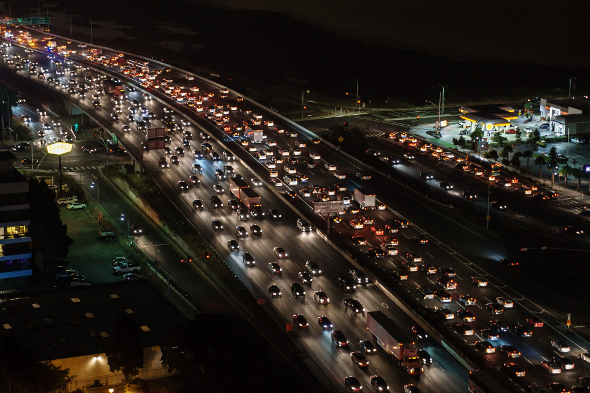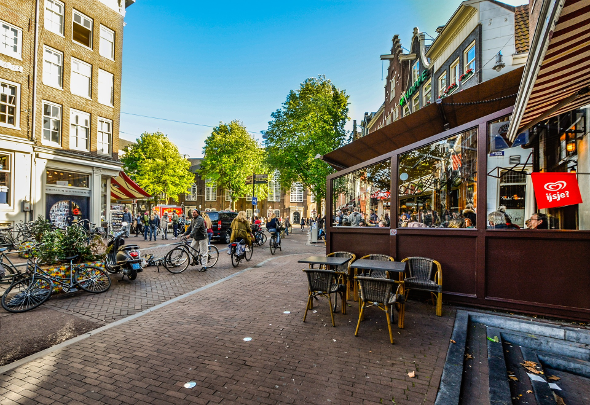
This post is called Culture And Politics because I want to allude to one simple fact: the low mode share and abysmal attitude to cycling and cyclists in some parts of the Australian community has nothing to do with using a bike to get around being impractical, inherently dangerous, unfeasible or because cyclists are somehow better or worse that other people. It has everything to do with the current state of our culture and poorly informed attitudes which are fuelled by the reprehensible policies and decisions of some of our politicians as well as the vested interests of corporations in and around the domain of selling oil and cars.
Firstly, a definition. When I say cycling, I don’t just mean getting your best riding kit out on a Sunday morning and taking to the road or trail for your weekend downtime. Doing that stuff is great and I do it quite a lot but what I mean by cycling here is using a bike for everyday trips like going to the shops or getting to work.
The benefits of increasing the modal share of cycling have been studied and documented ad nauseum – economic benefits , benefits to physical and mental well being, urban planning benefits and benefits to community cohesiveness and harmony. Not to mention addressing climate change and the utterly repugnant road death toll that happens every year. Entire books have been written on those subjects so we won’t delve into them here but suffice to say that there are virtually no downsides to increasing the modal share of cycling in an urban environment. And for the chorus of idiots about to wheel out their tired old falsehoods to rebuke that: no, bike lanes or cyclists on roads do not cause traffic congestion and, no, cyclists do not break the law more than any other road user and, no, cyclists on footpaths are not a mortal danger to pedestrians.
The good news is that councils, governments, the medical community, town planners and others all know that continuing with car centric cities in their current form is not feasible. You only need to look at the congestion at 8am on any workday morning in any big Australian city or look at the road death toll to see that the car-centric city is imploding under the weight of it’s cars and the body fat sitting inside them. And many of the people with the power to do so are trying to do something about it as evidenced by the fact that, despite some loud opposition, bike infrastructure continues to be built and there’s even been talk of investigating a user pays system for roads to try and recover some of the actual cost of everybody driving everywhere all of the time.
So, what is it that perpetuates such, in some cases, outright hatred of cycling in the face of evidence that suggests cycling (and active transport more generally) should have a much larger slice of the mode share pie? What is it that causes people to spend time creating bike hate websites and inventing myths about some sort of bicycle induced armageddon for our cities? What’s behind the logic twisting nonsense that riding is somehow contrary to Australia’s way of life when the bicycle is clearly embedded deeply in this country’s history?
One of the major factors contributing to cars enjoying such a major uptake within the urban setting is that over many decades governments and corporations have torn down any and every barrier – often at a greater cost than the benefit provided – to making the car the most convenient choice of transport available. Or at least they created the illusion that that is the case. Driving is not intrinsically convenient in and of itself but because the environment in which they move and exist was designed with the goal of making cars seem indispensable in mind. Since the seed of the car centric city was planted with the General Motors sponsored Futurama exhibition in 1939, cities have been designed around the car (indeed, some suburbs seem hard to live in without one). Dwellings themselves are now designed so that you arrive and leave almost exclusively via the garage without getting out of your car. “Jaywalkers” have been demonised to attempt to give cars full right of way on our roads and vast swathes of land have been sacrificed to the auto gods for parking and ever widening roads to make driving to your destination the obvious and sometimes only choice. And so, by the magic of marketing and groupthink, any perceived attack on or deviation from that status quo and perception of convenience is met with strong, though often baseless, opposition. But even some of the most vociferous opponents would seldom actually admit that what they really fear is not traffic jams or cyclists breaking road rules but the brakes being put on their gelatinous, sedentary drive-thru habits and automotive status symbols which have been marketed to them with surgical precision for decades and which cost the country every day in public health, road maintenance and host of other problems and instead doing what human bodies are meant to do: move. We’re not talking about becoming some sort of amateur athlete with a whole lot of expensive, specialised sports equipment; we’re talking about simply doing what humans have been doing for thousands of years which is using the energy in their own bodies to get to where they need to go. Sure, there’s a point at which using the body’s energy isn’t enough to cover the distance required and some more sophisticated mechanisation is required but those aren’t the kinds of trips we’re talking about here.
Another very interesting contributing factor is the Australian legal requirement to wear bicycle helmets. Despite all the car centric urbanisation and even though the car centric city was in full swing in the 80s and 90s when I was growing up, people still cycled to get to places. Not in massive numbers but it was certainly the go-to choice of transport for most kids, teens and early twenties. Schools had massive lockable chain wire mesh compounds exclusively for bike parking which were full to overflowing every day, parties and (not always legal) trips to the pub were attended by bike and we often made our way to the local beach to go fishing with our tackle boxes in a backpack and rods strapped to the frames of our bikes. It was a no brainer – you’d just get up, walk out of the house picking up your bike on the way out and ride down the street. It was easy, convenient and infinitely cheaper than driving. In fact, I didn’t even bother with a driver’s license until a year or two after I was allowed to sit the test for one.
But then around 1991 something happened. The Mandatory Helmet Laws (MHL) came in. At first the fines for non-compliance were miniscule and the level of enforcement lax by police so people kept riding helmetless as they had done. Helmets were relatively expensive, burdensome and butt ugly (remember the Stack Hat and the Bell salad bowl helmet) so people ran the gauntlet. But a few years after the introduction of the MHL, the fines went up in value and the cops started to get serious about the enforcement. Cycling was no longer convenient due to the helmets to the point that people simply abandoned their bikes.
One of the most curious things about MHL is how it came about in the first place and that Bicycle Network, a pro cycling organisation which presumably knows first hand what makes cyclists tick, supported them. With a slow but steady increase in popularity before the MHL, were bikes seen as a threat by the car and oil corporations operating in Australia at the time? What back room deals and threats went on to get the laws through? I don’t know and maybe we’ll never know the full story.
However we actually ended up with the MHL, from there cycling was shoved into the corner of niche sports which was the next step leading to our bad attitudes to cycling following on from the introduction of the MHL. When non-cyclists hear the word “cyclist”, I think they immediately conjure up images of a bunch of lycra clad roadies taking up a lane of what they think is their road. They might also subconsciously make conclusions about how cycling equals training and about the fact that they have no interest in pursuing any such goals. Finally, and most significantly, I think they see a threat to their convenience and to the costly but ultimately rewardless status symbol that is their car.
There is a ton of debate and research out there (too much to list) from various sources about how helmets supposedly save lives and therefore MHL was necessary. The washup of that is that helmets do little to save lives and in many cases promote risk taking behavior due to the creation of the illusion of safety and that the few and specific circumstances where helmets help are negated by the fact that people no longer engage in enough physical activity and suffer the consequences of ill health that follow. And if you think that’s a load of crap, consider that Australia is one of a tiny handful of countries in the world to have MHL.

Despite a surge in the popularity of cycling in Australia in recent years, most of that is in the area of sports cycling such as road biking and mountain biking. Don’t get me wrong, I think any growth in cycling is great and I love mountain biking and road biking but I have to wonder where Australia’s culture around everyday urban and utility cycling would be if we hadn’t adopted those Mandatory Helmet Laws back in the 90s and allowed more people to choose the convenience of simply jumping on their bikes and going to the shops, to work, the pub or to watch the cricket. Would drivers have more empathy for cyclists because many of them would also cycle? Would our bike infrastructure be better and more complete rather than having to play catchup now?
We may just have a second chance to find out the answer to those questions because, jawdroppingy, in September 2017 there was a survey put out by Bicycle Network asking if we’d like a rethink on MHL. The respondents voted resoundingly in favour of a rollback to MHL and now Bicycle Network is thinking about it’s position and whether or not they will start lobbying government to have the law rolled back. This will be extremely interesting.
If the MHL is eventually repealed, that will of course be great for cycling uptake but, as I said, that’s not the only factor involved. So, while the mechanical bull of politics starts up on MHL, what can we do to help give cycling the legitimacy and respect that it deserves? And while most drivers are courteous and considerate of bikes, what do you say to the few people who still believe that their registration and fuel excise pays for the roads, that cyclists should be licensed because bikes are really just like little cars and should be treated in the same way and that it’s our own fault if we get run over?
Probably a lot but people who say that sort of stuff don’t always have the faculties required to hold that kind of conversation while keeping it civilised and/or free of tin foil so sometimes it’s best to just, nod, smile, say nothing and rebut with your choices and contributions to cycling instead. Here are a few suggestions:
- Join an advocacy group like Bicycle Queensland.
- Write to your MP. An increasing number of politicians are riding bikes so it’s a chord you can strike.
- Do your research on which political parties and organisations support cycling and help them out by voting for them, donating a few bucks or volunteering some time if you can. You can also attend protests like the Space for Cycling ones.
- Ride casually as often as possible to compliment your road biking or mountain biking. Get a bike with some flat pedals, panniers, a basket or a removable trailer. You can just convert an old mountain bike if need be. Ride that bike to the shops, the library, the pub, the park to play cricket with your kids, for the morning coffee run or any other similar short trip. Wear normal, everyday clothes when you ride it.
- If you must say something talk cycling up casually. Speak about it as though it’s the most normal thing in the world because it is. Riding to get groceries or get to work should not be an extraordinary thing.
- Know the road rules and obey them whenever possible when you ride but remember that your safety is more important than avoiding a fine.
- Keep spending money on bike gear. The industry is already worth millions so support it further. Sure, buying stuff is worse for the environment than not buying stuff but you’d have to buy a heck of a lot of cycling gear to come even close to creating the kind of environmental footprint created by continuously driving, maintaining and upgrading a motor vehicle. I’m not saying buy every unnecessary bike gizmo there is – I’m just saying that if there’s stuff you need to make it just that bit more enticing for you to keep riding, buy it.
- Most importantly, keep riding. Despite intimidation, legislation or naysaying of any kind, just keep riding. Even doing a little is better than none at all.
Finally, I want to temper what I’ve written here with some of the realities about where we are right now. Grandiose ideas like “let’s get rid of the cars” are certainly necessary if there is ever any change going to be made at all but those sort of shifts don’t happen overnight and those kinds of ideas are usually an ambit – in reality, we meet somewhere in the middle (to begin with, anyway). I don’t pretend that I never use a car either – I own one. It’s more about reducing car use as much as possible and advocating for a higher bike mode share than trying to eliminate car usage altogether in one go because that’s just not realistic for most people in the current state of play in Australia.
Similarly, I don’t pretend that everyone should be somehow forced to cycle or that there’s no place at all in society for cars. Some people simply can’t cycle and some just won’t and that’s OK. I think it’s more about creating a better modal mix – something for everyone – than dictating that everyone must cycle. There are certainly some very good options that would compliment cycling for those people. And while I don’t think cars belong in urban areas, they make sense over longer, less frequent journeys which is an achievable situation but I guess making it happen mostly comes down to culture and politics.

